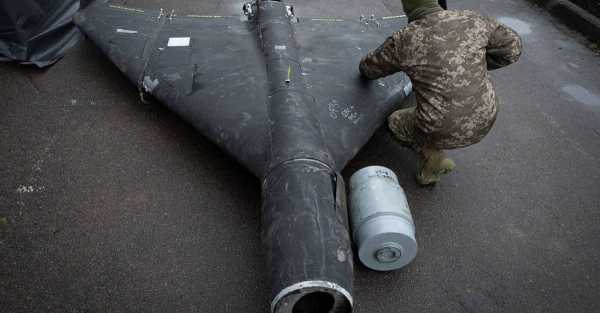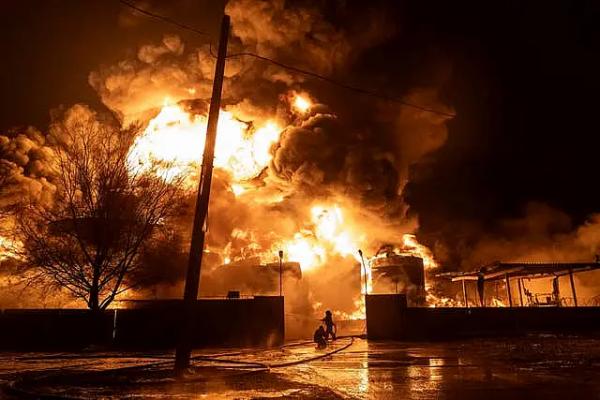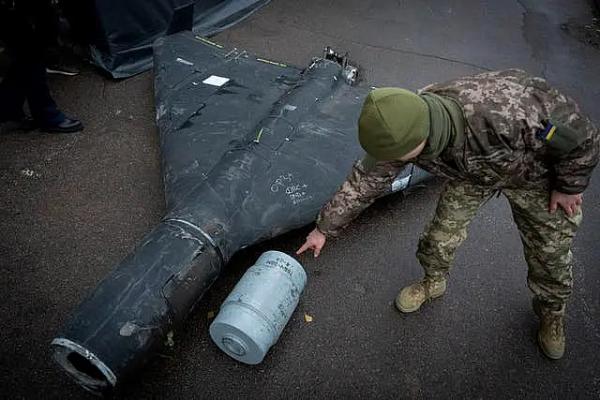
Russian engineers are manufacturing hundreds of decoy drones meant to overwhelm Ukrainian defences as cover for a horrific new weapon, an investigation has found.
A factory at Russia’s Alabuga Special Economic Zone recently started churning out thermobaric drones alongside the decoys, Associated Press reporters revealed.
The thermobaric warheads create a vortex of high pressure and heat that can penetrate thick walls.
They suck out all the oxygen in their path, and have a fearsome reputation because of the injuries they can inflict even outside the initial blast site, such as collapsed lungs, crushed eyeballs, and brain damage.
Russia came up with the plan for decoys in late 2022 and codenamed it Operation False Target, according to a source.

The idea was to launch armed drones along with dozens of decoys, sometimes stuffed with rags or foam, and indistinguishable on radar from those carrying real bombs.
Ukrainian forces must make split-second decisions about how to expend scarce resources to save lives and preserve critical infrastructure.
“The idea was to make a drone which would create a feeling of complete uncertainty for the enemy. So he doesn’t know whether it’s really a deadly weapon … or essentially a foam toy,” the insider said.
With the thermobarics, there is now a “huge risk” an armed drone could deviate from its course and end up in a residential area, where the “damage will be simply terrifying”, he said.
In recent weeks, decoys have filled Ukraine’s skies by the dozens, each one appearing as an indistinguishable blip on military radar screens. During the first weekend of November, the Kyiv region spent 20 hours under air alert, and the sound of buzzing drones mingled with the boom of air defences and rifle shots.
Unarmed decoys now make up more than half the drones targeting Ukraine, according to Serhii Beskrestnov, a Ukrainian electronics expert whose black military van is kitted out with electronic jammers to down drones.

Both the unarmed decoys and the armed Iranian-designed Shahed drones are being built at a factory in Russia’s Alabuga Special Economic Zone, an industrial complex set up in 2006 about 600 miles east of Moscow to attract businesses and investment to Tatarstan.
It expanded after the 2022 invasion of Ukraine and some sectors switched to military production, adding new buildings and renovating existing sites, satellite images show.
In social media videos, the factory promotes itself as an innovation hub.
But David Albright of the Washington-based Institute for Science and International Security, said Alabuga’s current purpose is purely to produce and sell drones to Russia‘s Ministry of Defence.
The videos and other promotional media were taken down after an AP investigation found that many of the African women recruited to fill labour shortages there complained they were duped into taking jobs at the plant.
Russia and Iran signed a 1.7 billion dollar (£1.3 billion) deal for the Shaheds in 2022, after President Vladimir Putin invaded Ukraine, and Moscow began using Iranian imports of the unmanned aerial vehicles, or UAVs, in battle later that year.
Soon after the deal was signed, production started in Alabuga.
In October, Moscow attacked with at least 1,889 drones – 80% more than in August, according to an AP analysis tracking the drones for months. On Saturday, Russia launched 145 drones across Ukraine, just days after the re-election of Donald Trump threw into doubt US support for the country.
Since the summer, most drones crash, are shot down or are diverted by electronic jamming, according to an AP analysis of Ukrainian military briefings.
Less than 6% hit a discernible target, according to the data analysed by AP since the end of July. But the sheer numbers mean a handful can slip through every day – and that is enough to be deadly.
Sourse: breakingnews.ie






